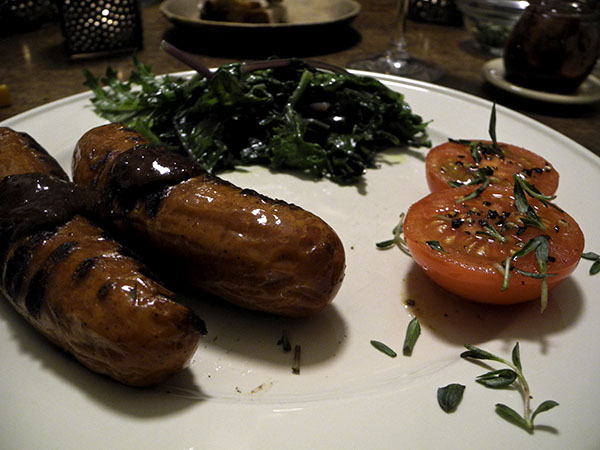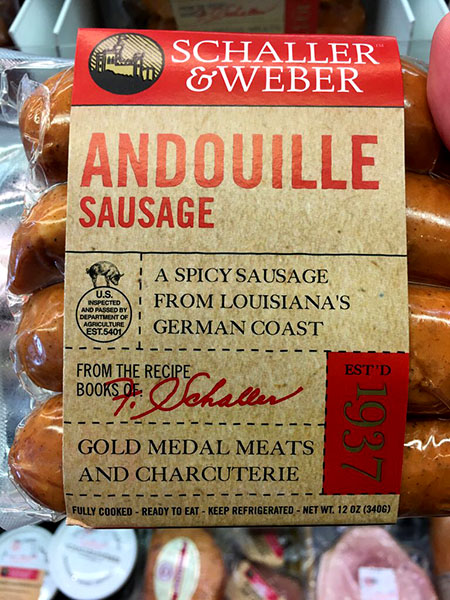
Germans in Louisiana.
I admit I don’t always get irony, and besides, why couldn’t there be Germans in Louisiana?

Barry picked up 4 sausages at Schaller & Weber on Wednesday. It’s the very German butcher and grocery store on the upper east side, which makes their own sausages. While he was still there, he texted me this image of a pre-packed version of the same Andouille, because the packaging had a description of the product on the label.
“A SPICY SAUSAGE FROM LOUISIANA’S GERMAN COAST”
I took the words literally, which Barry found amusing when I mentioned it once he had returned home. It seems I hadn’t understood the conceit: The smart young German-American owner of his family’s traditional ethnic food shop, one that had opened in intensely German Yorkville over 80 years ago, was playing with contemporary New York taste, and the superficial absurdity of a spicy Cajun sausage having anything to do with Germans.
All of this might have been true, but after a little searching on line just now, I learned that an important German migration (mostly Rhinelanders, who seem to have been the most prosperous and mobile), settled in the areas now called Cajun in 1717-1722, preceding by 40 or 50 years the arrival of the Acadians from Canada, following Le Grand Dérangement. The German area was, and still is known as the German Coast. One account says these Germans were responsible for introducing sausages to the region.
We didn’t need this intelligence to enjoy the delicious sausages we had last night, but I’m delighted to learn that Jeremy Schaller knows his history – and his geography.
- four fresh links of Louisiana German Coast-style spicy Andouille sausage from Schaller & Weber’s store, pan grilled for a few minutes, turning often until well scored on all sides, served with Inglehoffer cranberry mustard (a perfect condiment for strong spicy sausages)
- two halved Backyard Farms Maine ‘cocktail tomatoes’ from Whole Foods Market, seasoned with sea salt and freshly-ground black pepper, heated gently face down, then turned, inside a small vintage Corning Pyrex Flameware blue-glass pan, sprinkled with a little chopped chopped summer savory from Stokes Farm
- one bunch of red Russian kale from Migliorelli Farm, washed, drained, wilted inside a large enameled cast iron pot in a tablespoon or so of olive oil in which a section of spring garlic from Berried Treasures Farm had first been allowed to soften, seasoned with sea salt, freshly-ground black pepper, arranged on the plates, where a little more olive oil was drizzled on top
- the wine was a California (Pine Mountain–Cloverdale, of Sonoma County) red, Ana Diogo-Draper Cabernet Sauvignon Pine Mountain Vineyard-Cloverdale Peak 2016, from Naked Wines
- the music was Gloria Coates’ Symphony No. 7, with Jorge Rotter conducting the Siegerland Orchestra; and her piano trio, ‘Lyric Suite’, ‘Split the Lark – and you’ll find the Music’, performed by members of the Kreuzer Quartet